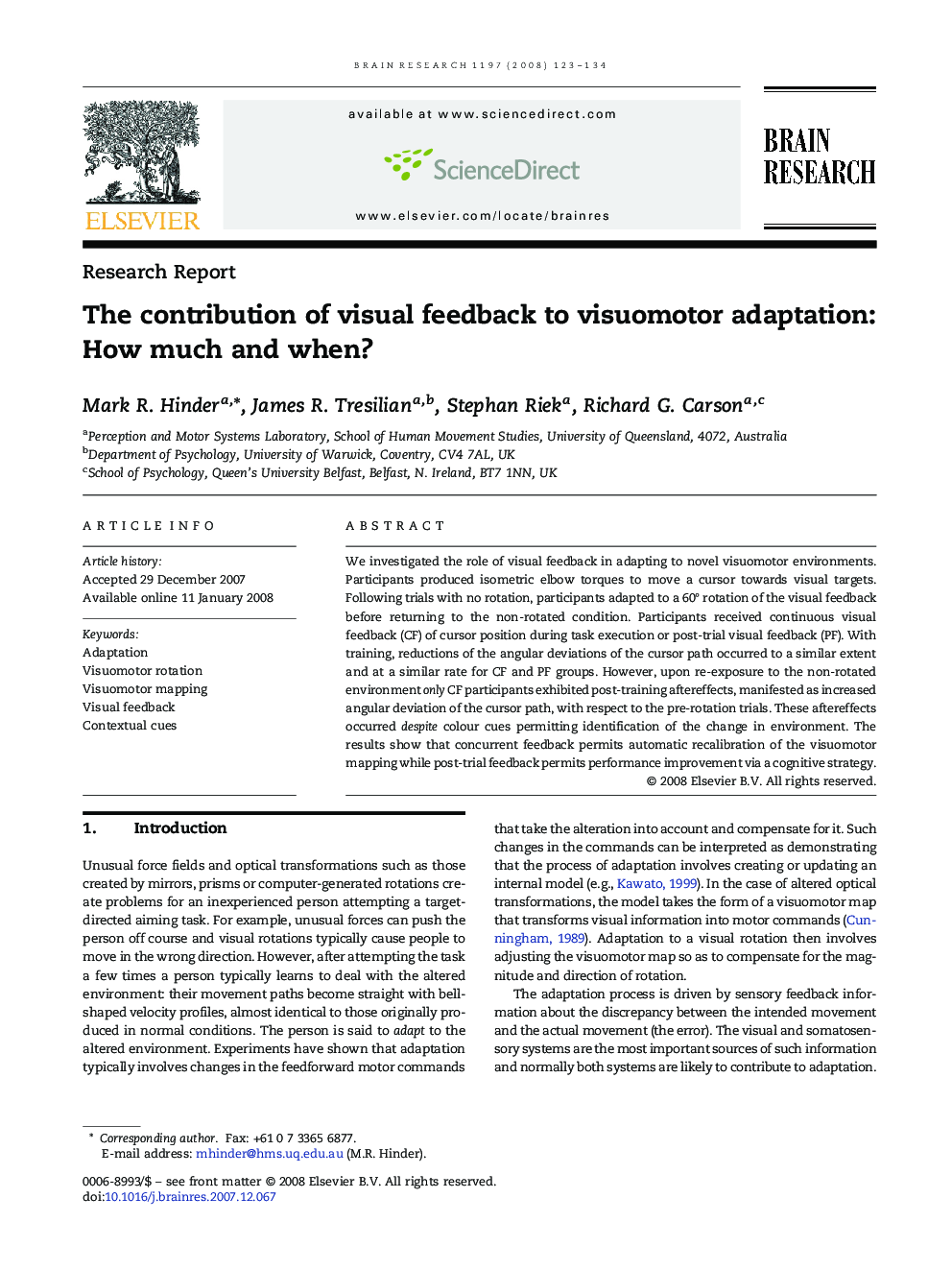| Article ID | Journal | Published Year | Pages | File Type |
|---|---|---|---|---|
| 4330057 | Brain Research | 2008 | 12 Pages |
We investigated the role of visual feedback in adapting to novel visuomotor environments. Participants produced isometric elbow torques to move a cursor towards visual targets. Following trials with no rotation, participants adapted to a 60° rotation of the visual feedback before returning to the non-rotated condition. Participants received continuous visual feedback (CF) of cursor position during task execution or post-trial visual feedback (PF). With training, reductions of the angular deviations of the cursor path occurred to a similar extent and at a similar rate for CF and PF groups. However, upon re-exposure to the non-rotated environment only CF participants exhibited post-training aftereffects, manifested as increased angular deviation of the cursor path, with respect to the pre-rotation trials. These aftereffects occurred despite colour cues permitting identification of the change in environment. The results show that concurrent feedback permits automatic recalibration of the visuomotor mapping while post-trial feedback permits performance improvement via a cognitive strategy.
